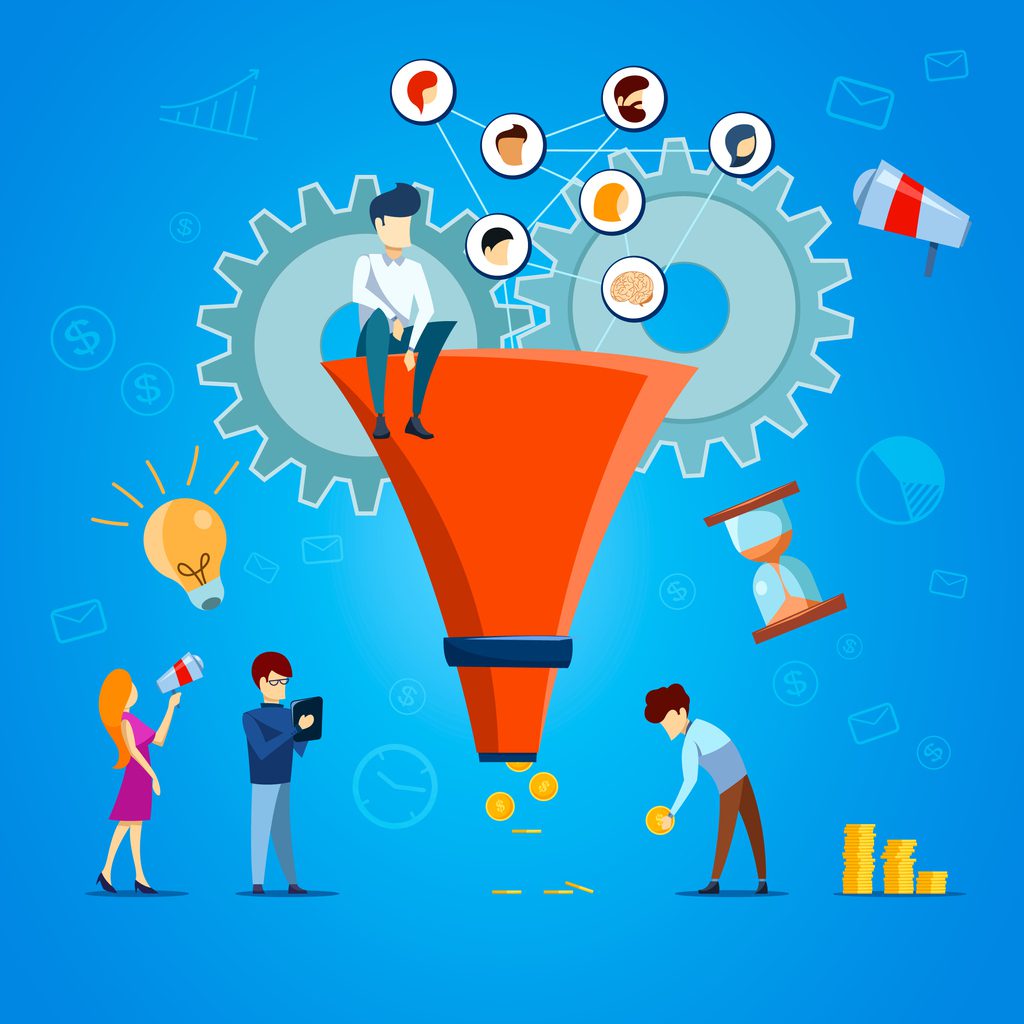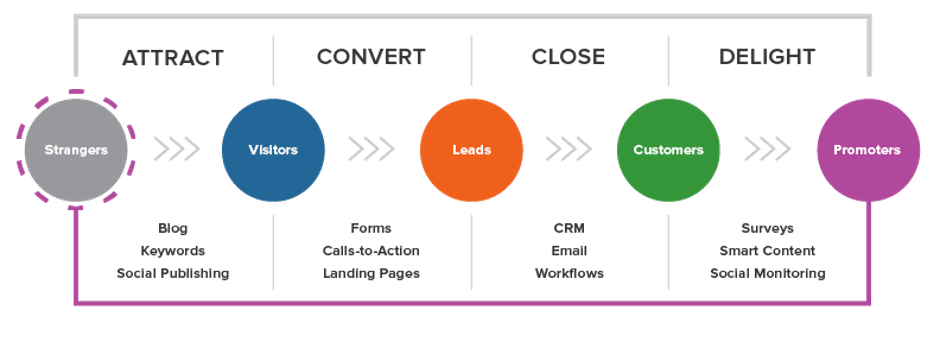
Creating marketing funnels for your buyer personas
Creating a clear and usable marketing funnels can be a useful visual representation of your ideal customer journey. However, many business owners turn to generic click funnel templates to try and create this journey. This issue is that this copy and paste method is generic and does not directly relate to your customers.
Buyer personas have brought a lot of success for business, but many are still woefully underused for creating effective and realistic marketing funnels. In this article, we discuss how you can use your buyer persona research at each step of the marketing funnel to create an effective customer journey to engagement.

Buyer personas and user personas
A buyer persona is the research a business conducts to find out who their ideal clients or customers are. If you like, this is a ‘before’ process that will adapt and refine through trial and error as a business gains a clear grasp of their target audiences.
A user persona is the data collected form interactions (Google Analytics, feedback, customer conversations etc.) that continues to inform your buyer personas through real world activities.
This is why a buyer persona is never set in stone but rather adaptable, and needs to be clear enough to focus your marketing activates. It is also why your marketing funnels must be rooted in your buyer personas and adapt alongside them.
Unfortunately, many businesses attempt to work the reverse of this process when creating marketing funnels. That is, they create their customer journey to suit their products or service, not the other way round.
How buyer personas build marketing funnels
So, now to have a more solid understanding of your buyer personas you can effectively plan how your customers will move through interactions with your business towards engagement. This is the foundations of your inbound marketing strategy. You can plan out and then test how your different buyer personas find your business and the process they go through before committing to a sale.
Here is an example of how a customer journey may look for your business. In reality, the process of reaching a sale is rarely linear, as we discussed in the first blog in this series.

What this funnel is useful for is planning and implementing all of the touchpoints and routes your customers will take with your business. From here, you can test out these funnels and adjust or amend at any drop off points.
The stages of a marketing funnel
It is important to gain an understanding of how your business’s buyer personas will react to your funnel at each stage.
Attract Stage
At this stage you need to be aware of when your customers are open to hear from you and what will trigger their initial reaction (their desire or pain point). Understand their decision-making process. If you sell high-cost products or services, know that this process will take longer. Know how your customers find your business and align your points of attraction to this.
Convert Stage
A refined conversion stage in your marketing funnel is about knowing exactly why a customer would choose you and, perhaps more importantly, why they wouldn’t.
- Are your competitors easier to interact with, do they offer better value etc.?
- Are your customers likely to have had a bad experience in the past with a similar product or service, or has your area of business received bad press?
- Are your customers being influenced to shop elsewhere and can you tap into these influences too?
- What does your customer like to see when they visit your website?
- How does your customer build a relationship with your business (newsletter, Google search on a target topic, updates on a product or service, factual content etc.)?
Closing Stage
This stage of the funnel is about knowing how your customers complete an engagement or sale with your business. Consider:
- What they expect in a buying process
- How your messaging reassures your customer that you are the right solution
- How your customers evaluate their purchasing options and make a final choice
Make sure to align this marketing and sales research to your business operations. It can be very frustrating to have created a clear marketing funnel only for it fall down through poor customer service or delayed response times.
Delight Stage
The final stage is about after sales activates that will help to refine your marketing funnels further and retain your existing customer base. Using tools such as surveys and reviews, following up with an email or phone call and reviewing what customers are saying about you on social will all inform this process. But make sure you are using your buyer personas to complete the after stage as your customers would expect. A heavy-handed approach is sure to be a turn off.
You want to get to the stage of understanding what success looks like to your customers. A satisfied customer will continue to promote your business through lines of referral and can become a key influencer for other customer’s decision making.
Generic click funnels
There are a huge number of generic click funnels and software packets on the market for creating marketing funnels for your business. While some of these can be useful to you, they will not have the desired effect if they are not rooted in your buyer personas. If you can create your marketing funnels with your buyer personas in mind you will achieve much more success in your sales and marketing process.
Would you like to learn more about marketing funnels?
If you are looking for help with creating buyer personas for your business, mapping your customer journey and creating effective marketing funnels, please get in touch.

